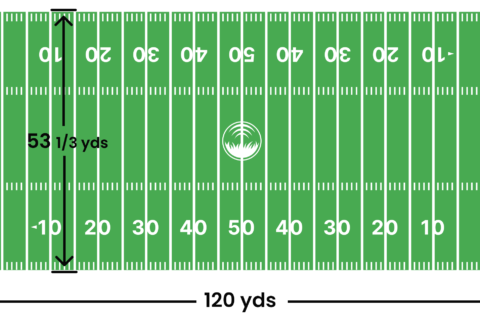Traditional boxing contest rules include three-minute rounds with one-minute breaks and a limit of 12 rounds. Boxers must wear approved gloves and mouthguards.
Boxing is a sport steeped in history and tradition. It involves two competitors fighting within a ring, aiming to outscore or knock out the opponent. Matches are supervised by referees who enforce the rules and ensure fair play. Fighters must follow strict guidelines, including weight classes and approved gear.
Judges score each round based on punches landed, defense, and overall performance. Safety measures, such as medical checks before and after fights, are mandatory. This ensures the well-being of athletes. Traditional boxing continues to captivate audiences worldwide with its blend of skill, strategy, and physical endurance.

Credit: en.wikipedia.org
The Heart Of The Ring: Origins Of Traditional Boxing
Traditional boxing began in ancient Greece. Fighters would wear leather straps on their hands. Over time, this sport evolved. Rules were added to ensure safety. Modern boxing developed in England. It became popular in the 18th century.
Boxing gyms opened in many cities. Coaches trained fighters to improve their skills. Today, boxing is a global sport. Many countries have national champions. People love watching these exciting contests.
Boxing has a strong cultural impact. Famous boxers inspire young people. Communities gather to watch big matches. Boxing stories often appear in movies and books. Heroes like Muhammad Ali are known worldwide.
Boxing events bring people together. Fans cheer for their favorite fighters. Winning a boxing match can bring great pride. Boxers become symbols of strength and courage.
Gearing Up: Essential Equipment In Traditional Boxing
Boxing gloves are crucial. They protect both the fighters’ hands and faces. Fighters also use hand wraps. Hand wraps provide extra support and protection. Wraps cover the knuckles and wrists. They help prevent injuries during punches. Gloves come in different sizes and weights. Each fighter selects gloves based on their weight class. Proper fitting gloves and wraps ensure safety.
The boxing ring is square-shaped. It measures between 16 to 24 feet on each side. The ring has four corners, each with a post. Ropes surround the ring to keep fighters inside. The ring’s floor is padded. This padding reduces impact during falls. The ring is elevated from the ground. Its height is usually around three to four feet. The size and structure of the ring ensure fair play and safety.
The Rulebook: Understanding Key Regulations
Boxers compete in different weight classes. This keeps the competition fair. Each class has a weight limit. Fighters weigh in before the match. This ensures they are in the correct class. Some common classes are flyweight, lightweight, and heavyweight. This system helps match boxers of similar size.
A boxing match has several rounds. Each round lasts three minutes. Between rounds, fighters rest for one minute. This gives them time to recover and get advice. The match usually has 12 rounds. The referee can stop the fight if needed. This ensures safety for both fighters.
Scoring The Fight: How Victories Are Determined
Boxing matches are judged on a point system. Each round, judges score the performance of both fighters. Points are awarded for clean punches, defense, and ring generalship. The boxer with the higher score at the end wins. In cases where points are tied, judges may call it a draw.
Judges play a crucial role in boxing. They observe each round closely and score the fighters. Judges look for effective aggression, defense, and clean hits. Their decisions impact who wins or loses. Three judges usually score each bout. Their combined scores determine the final outcome.
Fouls And Violations: Keeping The Sport Fair
Boxers must follow rules to keep the match fair. Hitting below the belt is not allowed. Biting or spitting is also forbidden. Holding the opponent to prevent punches is a foul. Headbutting can cause serious injuries and is banned. Using elbows to hit is against the rules. Turning your back to avoid punches is not fair play. Excessive clinching to avoid fighting is not allowed.
Breaking rules leads to penalties. Warnings are given for minor fouls. Points can be taken away for repeated fouls. Disqualification can occur for severe violations. Fines might be imposed on the offending boxer. Suspensions from future matches can happen. Injuries caused by fouls can end careers.
Safety Measures: Prioritizing Fighter Well-being
Fighters must undergo thorough medical examinations before each fight. Doctors check for any hidden injuries. Pre-fight tests include blood tests and eye exams. These steps ensure fighters are fit to compete. Fighters must also provide a clean bill of health. No fighter can skip these vital checks.
Referees play a key role in keeping fighters safe. They can stop the fight if needed. Fighters must wear mouthguards and gloves at all times. The ring must have padded corners to prevent injuries. There are strict rules against dangerous moves. Medical staff are always on standby near the ring. They can step in quickly if a fighter gets hurt.
Iconic Matches: Lessons From History
Memorable fights have taught us many lessons. These fights often show the importance of skill and strategy. They have also shown the value of bravery in the ring. Famous matches like Ali vs. Frazier have set the standard. These fights have inspired new generations of boxers.
Some fights have changed the rules of boxing. For example, long fights like Dempsey vs. Willard led to shorter rounds. They also helped improve safety measures for fighters. Historic contests have shaped the way we see boxing today. They have left a lasting legacy in the sport.
Historic contests have had a big impact on boxing rules. For example, the Marquess of Queensberry Rules were created. These rules made boxing safer and more organized. They introduced things like gloves and three-minute rounds.
Other rules came from famous fights. Weight classes were created to make fights fairer. The ten-second count rule was also made to protect fighters. These rules make sure that boxing is both exciting and safe for everyone.

Credit: www.wbcme.co.uk
The Future Of Traditional Boxing
Boxing is evolving with new technology. Modern training tools help boxers improve. Smart gloves track punches and speed. Virtual reality offers simulated fights for practice. These innovations make training smarter and safer.
New rules are being tested. Shorter rounds and fewer rounds keep boxers safer. Instant replays help referees make better decisions. These changes aim to keep boxing fair and exciting.
Traditional values remain important. Respect and discipline are key in boxing. New methods must honor these values. Modern gear should not replace hard work. Training still requires dedication.
Fans love the sport’s history. Old rivalries and legendary fighters inspire new generations. Keeping the essence of boxing alive is crucial. Evolution should enhance, not replace, the core spirit of boxing.

Credit: en.wikipedia.org
Conclusion
Understanding traditional boxing contest rules is crucial for both fighters and fans. These guidelines ensure fair play and safety. Respecting these rules helps preserve the sport’s integrity. Whether you’re a seasoned boxer or a new enthusiast, knowing the rules enhances your appreciation.
Stay informed and enjoy the rich heritage of boxing.








